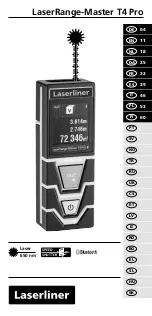
SP395 SoundPro Audio Integrator
Form7492
Operation Manual
50
TDA – Time Delay Analysis
This menu includes the Time Delay Analysis functions of the
SP395. Richard Heyser’s ground-breaking work on acoustics
in the late 1960s created new paradigms for analyzing audio.
The Audio Integrator incorporates one version of this work.
As implemented in the SP395, TDA is measured directly,
using a log swept sine wave output and a narrow band-pass
filter on the input.
Visual representation of the TDA test setup.
The time for the sound to travel from the speaker to the microphone (Ts) is approximately 1 mS
for every 1 foot of separation (1130 ft/S or 0.885 mS/ft). The sine wave generator is swept
through the portion of the audio spectrum we wish to test. Since the sound arriving at the
microphone from the speaker is delayed by Ts, the band-pass filter sweep also needs to be
delayed by Ts, so that at any given instant, the filter is tuned to the test frequency that is arriving
at the microphone.
This allows the detector to ‘hear’ only the direct sound arriving at the microphone. Without the
band-pass filter, all sound reaching the microphone would be summed in the RMS detector, and
ambient noise or late-arriving signals due to reverberation or echoes in the room would
contribute to false readings. With the band-pass filter sweeping in step with the generator, only
one frequency at a time (depending on the filter bandwidth) is measured by the RMS detector.
Essentially, since the reverberant field contains all of the previously generated frequencies,
attenuated at the RT60 rate, the
filter allows the system to attenuate those frequencies and send
to the measurement detector only the direct-sound frequency currently arriving from the speaker.
In the SP395, 1/12 octave data points are selected for the TDA graphs. As the generator output
sine wave is being swept, the input band-pass filter is also being swept, delayed by Ts. As each
1/12 octave boundary is reached, the RMS energy accumulated since the last boundary is
recorded; then a new data point sum is begun. This adds a small amount (1/12 octave) of
smoothing to the data.
Amplifier
Speaker
Sine wave
generator
RMS
detector
Band-pass
filter
Microphone
Sound waves
Propagation time in
air, Ts
















































